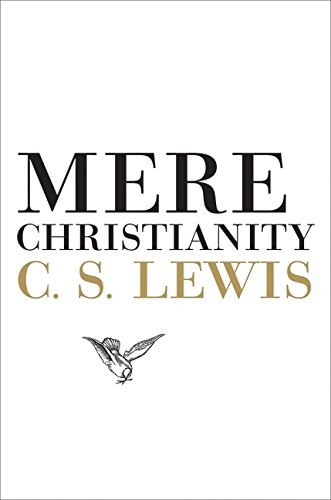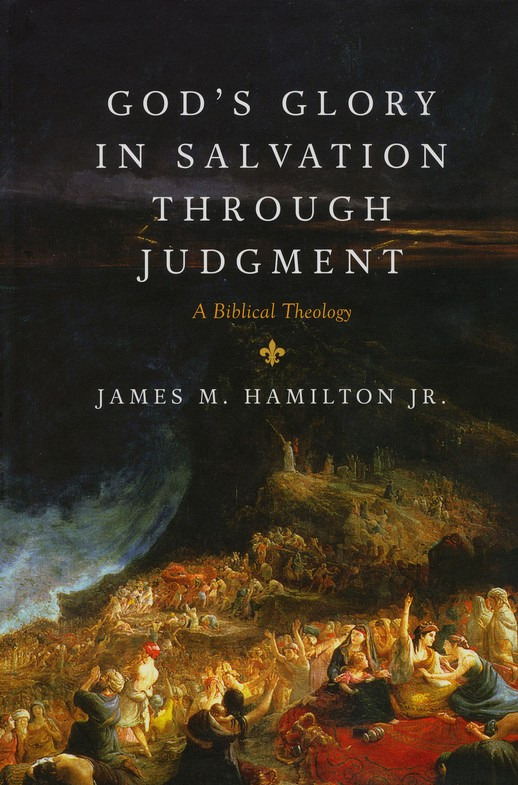Mere Christianity is a profound work of theological literature written by British writer and lay theologian C.S. Lewis. First published in 1942, the book is a timeless and influential work in Christian apologetics. Much of its content originated from a series of BBC radio talks made by Lewis during World War II, from 1941 to 1944. The book is a compelling testament to Lewis’s thoughtfulness, creativity, and ability to articulate complex theological concepts in a manner that is engaging and accessible to everyone.
Having completely read through this book, it is obvious how it came to be a foundational text for many individuals exploring Christian belief. Especially as its significance lies not only in its clear, inviting prose but also in the scope and depth of its thought. Lewis’s intellectual approach to the Christian faith and his rational arguments for its principles and tenets are aimed at a broad audience. He hoped to describe a “mere” Christianity, a set of core beliefs that all Christians, regardless of their denominational background, could agree upon.
Introduction
Mere Christianity is divided into four parts, each addressing a distinct area of Christian belief and practice. The first section, titled “Right and Wrong as a Clue to the Meaning of the Universe,” proposes the existence of a universal moral law that all humans innately understand. Lewis argues that this moral law cannot result from biological or social evolution but must come from a divine source, thereby providing a moral argument for the existence of God.
The second part, “What Christians Believe,” delves deeper into Christian doctrine. Here, Lewis explores the nature of good and evil, the concepts of free will, and the Christian understanding of God and the universe. He discusses the concept of dualism and then introduces the Christian understanding of God’s nature, presenting Jesus not merely as a good moral teacher, but as the Son of God, thereby addressing the crux of Christian belief.
“Christian Behavior,” the third part of the book, elaborates on the practical application of Christianity in daily life. Lewis talks about Christian morality in terms of personal ethics and the broader context of justice, charity, forgiveness, and the importance of love, amongst others. He illuminates the concept of ‘the cardinal virtues,’ the theological virtues, and discusses topics like sexual morality, marriage, forgiveness, and the love of God.
In the final section, “Beyond Personality: Or First Steps in the Doctrine of the Trinity,” Lewis explores the concept of the Trinity and explains the transformation process of a human becoming a part of the “Body of Christ.” This section presents some of Christian doctrine’s more complex theological aspects, which Lewis simplifies with brilliant and relatable analogies.
Throughout Mere Christianity, Lewis’s style is conversational yet scholarly, with a thought-provoking approach that invites believers and skeptics to examine their beliefs. The book uniquely blends philosophical argumentation, theological instruction, and spiritual encouragement. With his literary talent and depth of understanding, Lewis provides a persuasive case for the Christian faith.
At the same time, Lewis carefully avoids delving into the divisive specifics of different Christian denominations, focusing instead on the shared tenets of the faith. This is the ‘mere’ Christianity he proposes – a vision of faith that aims to be inclusive rather than exclusive. This focus on shared belief has helped the book gain wide acceptance among Christians of many different traditions.
Mere Christianity is more than just a book; it is an immersive experience in understanding one’s faith. Whether you are a devoted believer, a skeptic exploring the Christian faith, or someone interested in religious philosophy, this classic work provides deep insights and promotes thoughtful reflection. Regardless of your perspective, Mere Christianity invites you on a journey of exploration and discovery that has the potential to transform your understanding of Christianity and the world.
Book I
RIGHT AND WRONG AS A CLUE TO THE MEANING OF THE UNIVERSE
Book One of Mere Christianity begins with Lewis’s exploration of morality and the concept of right and wrong, which he uses as a clue to discerning the existence and nature of God. He argues that moral law, the internal code of conduct recognized universally by humans, points to a lawgiver—God.
The first chapter, “The Law of Human Nature,” introduces the notion that humans have an innate sense of right and wrong, an idea that transcends cultural differences. Despite varied societal norms and customs, people universally understand fundamental concepts of fairness, justice, and moral conduct. Lewis argues that this moral law or ‘Law of Human Nature’ suggests the existence of a moral lawgiver, or God.
In “Some Objections,” the second chapter, Lewis refutes the notion that morality is a social or biological construct. He suggests that while instincts may often guide our actions, the decisions we make when instincts conflict reveal a deeper moral law. He also contends that societal norms, though influential, don’t define morality because societies themselves can be corrupt or unjust.
“The Reality of the Law” is the third chapter. Here, Lewis discusses how people often fail to follow the moral code they recognize, a state he terms ‘quarreling.’ Quarreling, he argues, is an implicit recognition of a universal moral law because it entails appealing to an accepted standard of fairness when one feels wronged. Lewis implies that the regularity of quarreling in human interaction signifies the universal reality of moral law.
In the fourth chapter, “What Lies Behind the Law,” Lewis moves from discussing moral law’s existence to speculation about the universe’s nature. He proposes two views: the Materialist view, which states that the universe is a random occurrence without a higher power, and the Religious view, which argues that a mind orchestrates the universe. Lewis suggests that the existence of the moral law, which does not fit into the mechanics of the survival of the fittest, supports the religious view.
“We Have Cause to Be Uneasy” is the last chapter of the first book. Lewis concludes that God, as the moral lawgiver, must be righteous and just, implying that humans, who frequently disobey this moral law, have cause to be concerned. Despite this, he also points to the sense of comfort people find in recognizing this moral lawgiver, suggesting that the Christian journey provides hope.
By the end of Book One, Lewis lays a foundation for the Christian faith by arguing that humanity’s shared, universal morality indicates a shared source of this morality, a higher power or God. According to Lewis, moral law is not a creation of humanity but an indication of the divine within and beyond us. This line of reasoning establishes a context for Lewis’s subsequent discussion of Christian doctrine and beliefs in the remaining sections of this book.
Book II
WHAT CHRISTIANS BELIEVE
Book 2, titled “What Christians Believe,” elucidates key Christian doctrines, making them accessible to his lay readership. His central themes include the nature of God, the concept of the Trinity, the nature of good and evil, and the figure of Jesus Christ. Lewis begins this book by clarifying what God is not. He argues against the popular notion of God as a vague spiritual force, instead asserting the Christian belief in a personal God, the sort of God who has a will, can love, and can relate to us as individuals. This is the foundation of Lewis’s theistic view, where God is both the cause and the purpose of the universe.
From there, Lewis moves on to the question of the nature of good and evil, arguing against a dualistic interpretation of the universe. Dualists, according to Lewis, see the world as a battleground of equal opposing forces of good and evil. But Lewis maintains that evil is not a thing in its own right, but rather a perversion or corruption of good. Evil is parasitic on good and is only possible when good things go wrong. In this perspective, God is entirely good, and evil originated from free will when creatures chose to misuse their God-given freedom. Lewis stresses that, despite evil’s apparent power, it is ultimately subordinate to God’s goodness.
The problem of evil leads Lewis to the figure of Christ. He addresses the issue of why, if God is good, the world is filled with suffering. Lewis introduces the idea of the Fall, the moment when human beings first chose to turn away from God. According to Lewis, this choice introduced sin and suffering into the world. Yet, God, in his mercy, offered a solution to the problem of sin: Jesus Christ.
Lewis then takes on one of his most famous arguments: “Liar, Lunatic, or Lord,” often paraphrased as “Mad, Bad, or God.” Lewis argues against those who would relegate Jesus to the status of a great moral teacher but deny his divinity. Lewis points out that Jesus made claims that would, if not true, make him either a madman or a devil. He claims that he will forgive people their sins; he says that he has always existed; he says he is coming to judge the world at the end of time. No one who made such claims could be considered a great moral teacher but not divine. Thus, we are left with three options: Jesus was a liar (a deliberate fraud), a lunatic (a man of unsound mind), or he was who he said he was: Lord.
In the final chapters, Lewis grapples with the Christian concept of the Trinity. Lewis analogizes the Trinity with the dimensions of space. Just as a single dimension can contain an infinite number of lines, and two dimensions can contain an infinite number of lines and shapes, so too, he argues, can God be both three and one. The three persons of the Trinity – Father, Son, and Holy Spirit – are distinct, but they are all contained within the oneness of God.
Lewis continues to use everyday language and familiar analogies to unpack the essential beliefs of the Christian faith. His approachable style and thoughtful arguments continue to make this book a valuable resource for both Christians seeking to deepen their understanding of their faith and skeptics exploring Christianity.
Book III
CHRISTIAN BEHAVIOR
The third book, “Christian Behavior,” lays out Lewis’s vision of what ethical conduct, under the influence of Christian teachings, should look like. In this book, Lewis explores different virtues and vices, the nature of morality, and the character of a ‘good man’ according to Christian morality. Here Lewis begins by suggesting that Christian morality is like a map. Just as maps help us navigate the physical world, so Christian morals help us navigate the spiritual world. He then proceeds to discuss the ‘Cardinal Virtues’, which are wisdom, courage, temperance, and justice. These virtues are not exclusive to Christianity and are recognized by various philosophical traditions as key aspects of good moral character.
The conversation then shifts to social morality. Lewis contends that Christianity does not dictate a specific political or economic system. Instead, it sets forth general principles that should guide human interactions. He argues that Christianity encourages a love that extends beyond personal affections. This is ‘Agape,’ an unconditional love that expects nothing in return, a love that should be extended to all, including enemies.
Lewis also emphasizes the importance of sexual morality, devoting a significant portion of this book to the subject. He clarifies that he does not see sex as evil, but argues that, like all powerful desires, it can be dangerous when not properly controlled. He is critical of the prudishness about sex and the modern casual attitude toward it. Lewis supports traditional Christian teachings about marriage and sexual purity, arguing that casual sex treats people as objects rather than as individuals with inherent dignity.
In subsequent chapters, Lewis explores a variety of other ethical topics. He argues that the Christian virtues of hope and charity should guide all aspects of life, including work, play, and even laughter. He explains that Christianity teaches the importance of individual morality and the necessity of a just and compassionate society.
He then moves to the topics of forgiveness and pride. Lewis contends that forgiveness is a crucial virtue for Christians, even when it’s hard. He acknowledges that forgiving those who’ve wronged us can be extremely difficult but asserts that it’s a necessary part of following Christ. He considers pride the ‘great sin,’ the root of all evil, and humility its antidote.
Book III concludes with a chapter on faith, in which Lewis distinguishes between the faith that affirms belief in Christian doctrines and the faith that continues to trust God even in the face of difficulties and doubts. Lewis presents the moral and ethical standards set forth by Christianity rationally and logically, aiming to demonstrate that these standards, while challenging, are designed for the good of individuals and societies alike. His discussions are not solely based on faith; they also integrate philosophical, psychological, and social perspectives to examine Christian morality comprehensively.
Book IV
BEYOND PERSONALITY; OR FIRST STEPS IN THE DOCTRINE OF THE TRINITY
In this final book, Lewis investigates the nature of God as a trinity, a concept central to Christian doctrine but often difficult to understand. He admits that human language is inadequate to express this complex idea fully, but still, he uses accessible metaphors and analogies to give us a glimpse of the idea.
Lewis starts by discussing the distinction between begetting and making, which he uses to explain the relationship within the Godhead further. God the Father “begets” God the Son, but doesn’t “make” Him, in the sense that human parents beget their children, but a carpenter makes a table. In the former, the offspring share the same nature as the parents, while in the latter, the creation is fundamentally different from the creator. Hence, Jesus, the Son of God, shares the same divine nature as God the Father, and isn’t a created being.
Next, Lewis explores the idea of God as a timeless entity existing in the eternal present. God isn’t limited by past, present, and future constraints in the way humans are. As such, he explains that when Christians talk about Christ being begotten “before all worlds,” it doesn’t mean there was a time when He wasn’t. It means that Christ is eternally begotten, always coming from the Father but never separate from Him.
In addition, Lewis discusses the concept of the Holy Spirit and His role in the lives of Christians. Lewis presents the Holy Spirit as the very life of God living within believers, transforming them into the likeness of Christ. This transformative process, which he calls “good infection,” is the crux of Christian morality and spirituality.
Furthermore, Lewis addresses the importance of prayer and the Christian’s direct interaction with God. He emphasizes that prayer isn’t a way of making God do what we want but a process of learning to align ourselves with what He wants. He likens God to a new dimension of existence that humans can’t comprehend, and states that through prayer, a divine life enters and transforms us.
Toward the end of the book, Lewis discusses the paradoxical concept of surrendering to gain, arguing that a person can only find true life and self by giving it up to God. He also clarifies misconceptions about God’s omnipresence, asserting that God isn’t spread thinly across the universe, but entirely present at every point of it.
Lastly, he grapples with the idea of God’s joy, which results from our unity with Him. Our true nature, he says, is derived from God, and we are most ourselves when we align with His will. Lewis doesn’t aim to provide a comprehensive or exact explanation of the complex doctrine of the Trinity. Instead, he uses his unique approach to make these profound ideas more accessible and relatable, guiding readers to understand the Christian conception of God and the transformative nature of His relationship with humanity.

























